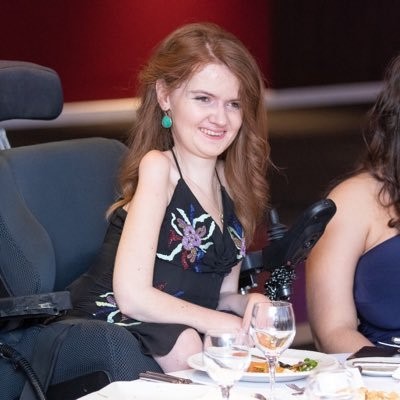.css-94m6rd-HeadingWrapper{border-bottom:solid 1px #BABABA;padding-bottom:1.5rem;}.css-94m6rd-HeadingWrapper > *:not([hidden]):not(style) ~ *:not([hidden]):not(style){margin-top:1rem;}
- .css-8d0yke-MetadataStripItem{display:inline-block;white-space:nowrap;margin-top:0.25rem;max-width:calc(100% – 1em);}.css-8d0yke-MetadataStripItem::after{content:”;display:inline-block;height:1.25em;border-left:#BABABA 1px solid;margin:0 0.5em;vertical-align:-0.25em;}.css-8d0yke-MetadataStripItem:last-child{max-width:100%;}.css-8d0yke-MetadataStripItem:last-child::after{content:none;}
.css-2yhany-StyledTagContainer{font-family:ReithSans,Helvetica,Arial,freesans,sans-serif;font-weight:400;font-size:0.875rem;line-height:1.125rem;}
- .css-dh1p3g-StyledTag{display:-webkit-box;display:-webkit-flex;display:-ms-flexbox;display:flex;white-space:nowrap;}
- .css-1sd1v8r-StyledLink{color:#3F3F42;border:1px solid #DB7F7F;font-weight:bold;padding:0.5rem;-webkit-text-decoration:none;text-decoration:none;}.css-1sd1v8r-StyledLink:hover,.css-1sd1v8r-StyledLink:focus{background:#B80000;color:#FFFFFF;}Coronavirus pandemic
.css-uf6wea-RichTextComponentWrapper{margin:1rem 0;max-width:36.25rem;}
.css-14iz86j-BoldText{font-weight:bold;}This weekend shielding will officially stop. The “elderly and vulnerable” who have followed stringent rules will re-join society and follow the same social distancing precautions as everyone else. But some are concerned they will not be able to shake off the label “vulnerable” and the world they left four months ago may be less accessible than before, as the BBC’s Octavia Woodward explores.
.css-r83t2i-ComponentWrapper{margin:1.5rem 0;}

As someone with Spinal Muscular Atrophy (SMA) – a disability that weakens all my muscles and affects my lungs – I wasn’t thrilled when a potentially fatal respiratory virus began to spread around the globe.
I was even less thrilled when the coronavirus pandemic seemed to divide people into two groups: The general population, and the elderly and “vulnerable”.
The V-word was meant to infer protection but instead, for some of the 2.2 million people asked to shield, it felt dehumanising and changed our 21st Century reality.
Then, as lockdown began to ease, more questions emerged.
Will the one-way systems in shops use the route with the lift or the stairs? How will those who are deaf, lip read when everyone is wearing masks?
Most of us on the government’s Clinically Extremely Vulnerable list haven’t spent our entire lives feeling vulnerable, instead we’ve got on with our lives with different identities, passions and lifestyles.
So as “normal” life approaches I thought the “vulnerable” could use some PR and sought out Baroness Jane Campbell and Jamie Hale who turn the very idea of vulnerable on its head.
And while at first glance none of us look like the kind of people who could take on coronavirus and win, we do have our own ventilators, so that’s a good start…

.css-72p885-ComponentWrapper-CrossheadComponentWrapper{margin:1.5rem 0;padding-top:1rem;}
.css-1jlqpzd-StyledHeading{font-family:ReithSerif,Helvetica,Arial,freesans,sans-serif;font-weight:500;font-size:1.5rem;line-height:1.75rem;color:#3F3F42;}@media (min-width:37.5rem){.css-1jlqpzd-StyledHeading{font-size:2rem;line-height:2.25rem;}}.css-1jlqpzd-StyledHeading:focus{outline-style:none;}.css-1jlqpzd-StyledHeading:focus-visible{outline-style:auto;}
Listen to Octavia chat to Baroness Jane Campbell for podcast mini-series Meet The ‘Vulnerables’
.css-1rnnz6t-StyledFigureCaption{background:#3F3F42;color:#EEEEEE;padding:1rem;}

For Baroness Campbell, Covid-19 is not the first time she has stood up for disability rights. We have the same condition – SMA – and many rights that have made my life easier – such as being allowed to choose mainstream education – she helped secure.
As a Member of the House of Lords she sits at the heart of government, yet when I asked her what she thought of the V word, she didn’t mince her words.
“I absolutely hate the word ‘vulnerable’. Because I’m anything but. We are not vulnerable people. We are in vulnerable situations,” she stated.
This attitude of defiance may not be what you expect from a baroness, but her rebellious nature has defined her career.
In 1995 she was one of about 30 disabled activists to block Westminster Bridge in the fight for the Disability Discrimination Act (DDA) which would make it unlawful to discriminate against a person based on their disability.
”There was a lot of excitement, a lot of nervousness. None of us had ever done an action in our lives before,” she recalls. “Some people had barely come out of their front doors.”
But even while causing disruption, people didn’t quite know how to react.
“The police, frankly, did not know whether to pat us on the head and give us an ice-cream or try to arrest us.”
Ultimately the protest helped pass the DDA in November 1995 which has now become part of the Equality Act 2010.
Jane’s continuous energy to fight is something she gratefully attributes to her upbringing.
“I had parents that wouldn’t accept that I was going to just sit home, be a disabled person who was looked after. They always pushed me really hard to get out there and to get a life.”
It’s slightly ironic that in 2020 sitting at home is exactly what disabled people have been told to do even if it’s helped protect us. But getting out there is a sentiment I’m familiar with and was probably made easier because of Jane.
By the time I left home for university, she had fought for legislation which would allow me to employ my own Personal Care Assistants through Direct Payments, rather than having my life dictated by care agency rotas.
This wasn’t available when Jane set off for the University of Sussex.
When I asked how she managed, she replied: “I got myself a boyfriend. That is how I coped.”
The funding that allows me to choose boyfriends without considering their care capabilities is expensive. During the 2018/2019 financial year, councils spent £22.2bn on social care. But this is less than pre-2008 levels before the financial crash hit and austerity measures were introduced. And yet the number of people who need funding is growing.
This is something Jane is acutely aware of given the economic uncertainty coronavirus has triggered.
“We’re going to go into a big economic downturn, and that’s not good news for us. So we have to be ready. And we have to be ready to say ‘we must have a slice of this cake’. That we’re not the Expendables. We’re human beings.”
The expense of being disabled hasn’t escaped the notice of trans and disabled playwright Jamie Hale.
Their vulnerability would probably put them on a par with Jane and me, yet their credits include a solo show at the Barbican and an upcoming Netflix series – achievements that many would envy.
However, it hasn’t been easy.
“I’m never going to be pitching on an even keel with creatives without access needs. It will always be complicated and potentially expensive to accommodate me,” they say.
So far, Jamie has managed to navigate the industry, but now it too is experiencing difficulties with film making paused and theatres empty which could make it harder for the industry to be so readily inclusive.
To stand out from other artists they often focus on their specialism – disability – but that comes with the fear of being pigeonholed and as a consequence, Jamie refuses to publicly disclose their condition, because “I’m so much more than that.”
As a way to defy this labelling, Jamie has used transition “to take control of the shape of my body”.
They began testosterone nine years ago and had a double mastectomy, but cannot safely transition any further due to their impairment.
“Since then I’ve had several tattoos and a lot of piercings and it’s been a very similar sense of wanting to claim ownership over my body and my skin.”
It is this right to ownership of our lives that can become slippery when different signals are sent out – like the “vulnerable” tag and the pressure to sign DNR forms.
While a turn of phrase might seem insignificant to some, it has felt like a personal attack to many.
This is why the V-word needs to be held to account, especially when we’re about to embrace this new society.
We aren’t simply disabled or vulnerable, we are also the policy makers, journalists, entrepreneurs and everything else you can imagine. In the time of corona, the end of shielding and beyond, we need to be treated as such.

.css-144ki52-SectionWrapper{margin:1.5rem 0;padding-top:1.5rem;}
.css-5h2rh7-StyledHeading{font-family:ReithSerif,Helvetica,Arial,freesans,sans-serif;font-weight:500;font-size:1.125rem;line-height:1.375rem;color:#3F3F42;}@media (min-width:37.5rem){.css-5h2rh7-StyledHeading{font-size:1.25rem;line-height:1.5rem;}}.css-5h2rh7-StyledHeading:focus{outline-style:none;}.css-5h2rh7-StyledHeading:focus-visible{outline-style:auto;}
Related Topics
- .css-1as76fj-PromoItem{margin:1.5rem 0;}
- .css-bo4o2o-Promo{font-family:ReithSans,Helvetica,Arial,freesans,sans-serif;font-weight:400;font-size:0.875rem;line-height:1.125rem;display:-webkit-box;display:-webkit-flex;display:-ms-flexbox;display:flex;position:relative;background:#FFFFFF;outline:solid transparent;color:#696969;-webkit-flex-direction:column;-ms-flex-direction:column;flex-direction:column;height:100%;false;}.css-bo4o2o-Promo .ett16tt0{-webkit-flex:none;-ms-flex:none;flex:none;margin-bottom:0.5rem;}.css-bo4o2o-Promo .ett16tt9{-webkit-box-flex:1;-webkit-flex-grow:1;-ms-flex-positive:1;flex-grow:1;}.css-bo4o2o-Promo a:not(.ett16tt7){z-index:1;position:relative;}
Source: BBC News – Health








